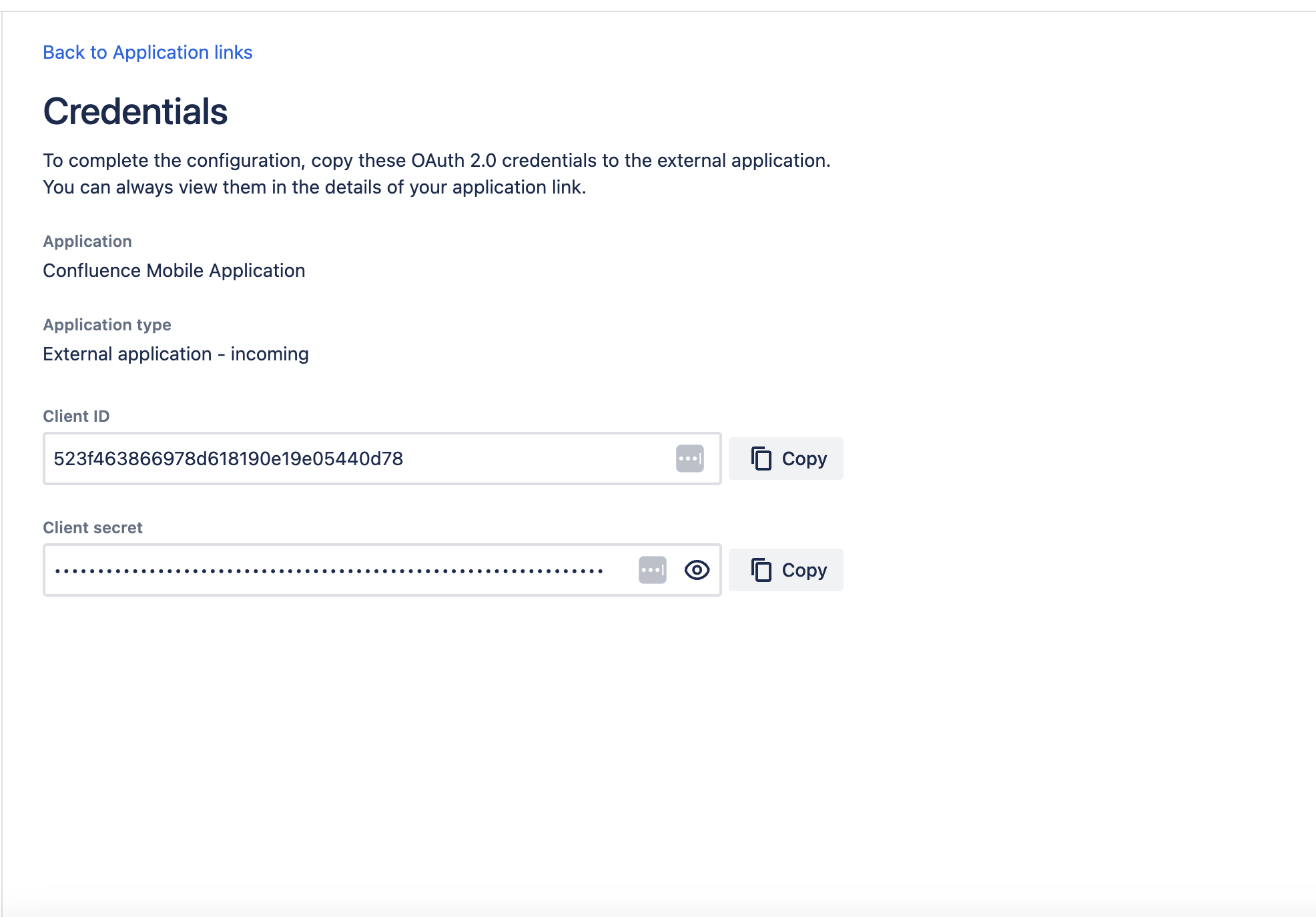Configure OAuth 2.0 for Confluence iOS
Before you begin
The Confluence Data Center iOS mobile app acts as the OAuth client, while Confluence itself is the OAuth provider API. The iOS app uses an authorization code with the Proof Key for Code Exchange (PKCE) flow.
OAuth 2.0 is compatible with Confluence 9.1 and later via the OAuth plugin 4.1.1 and later.
Mobile Device Management (MDM) setup
To use the OAuth 2.0 flow with the MDM setup, first you need to configure OAuth, and then integrate it with your instance.
Configure OAuth 2.0
To configure OAuth 2.0 for MDM, create an incoming Application link:
Go to Settings, then General Configuration, and then Confluence mobile app.
Select Create link and use the following properties:
For Application type, use External application.
For Direction, use Incoming.
Select Continue. On the next page, use only these properties:
Redirect URL:
confluence-server://oauth-callbackPermission:
WRITE
Save the changes.
Confluence will generate the OAuth credentials that include these details. More about configuring incoming links
After Confluence generates the OAuth credentials, pre-populate site URLs on the login screen.
If MDM is already set up for Confluence Data Center iOS mobile app, make sure you have the following configuration for the site details.
[
{ "title": "My Confluence Site", "baseURL": "https://confluence.example.com"}
]Integrate OAuth 2.0
To integrate OAuth with your instance, use the configuration below, where:
For the
clientID, use the Application link you’ve just created.The value
cacheSessionInMobileBrowseris aBool flag(true or false)indicating whether the mobile browser utilized for authentication should be cached.
[
{ "title": "My Confluence Site", "baseURL": "https://confluence.example.com", "oauth": { "clientID": "your_clientID", "cacheSessionInMobileBrowser": false } }
]Save your changes. Before deploying the app configuration updates to your users, we recommend accessing the Confluence Data Center mobile app on a device to ensure the details are accurately captured. You'll get an error if the app can't display your sites list.
Non-Mobile Device Management (MDM) setup
In case you want to use the OAuth 2.0 flow without MDM, you can use Confluence Mobile plugin for passing client credentials. Make sure you use this feature with the compatible Confluence version. For Confluence 9.1 or later, use Confluence Mobile Plugin 19.1.47 or later.
Client credentials will be passed via this endpoint: [base-url]/rest/nativemobile/1.1/info/login. Make sure that the info/login endpoint is unauthenticated in your environment.
If your instance has a reverse proxy that redirects unauthenticated requests, you’ll need to use the MDM setup. In this scenario, you don’t need to create an Application link manually. Instead, Confluence Mobile Plugin will do everything by itself. To activate OAuth 2.0 without MDM:
Go to Settings, then General Configuration, and then Confluence mobile app.
Turn on OAuth 2.0.
Now, the iOS devices will use the OAuth 2.0 protocol.

